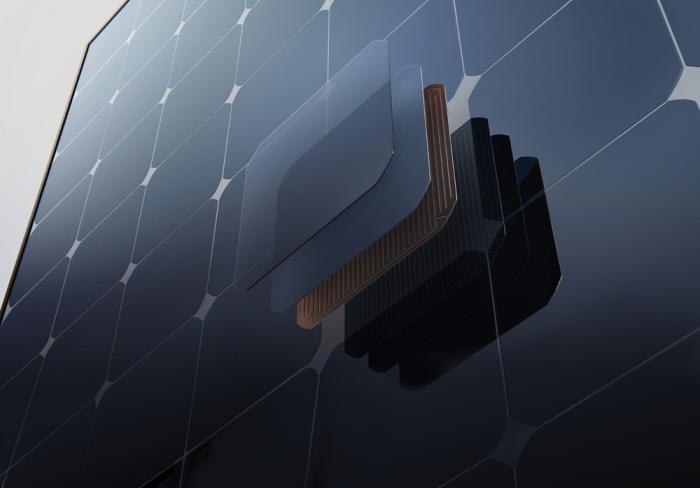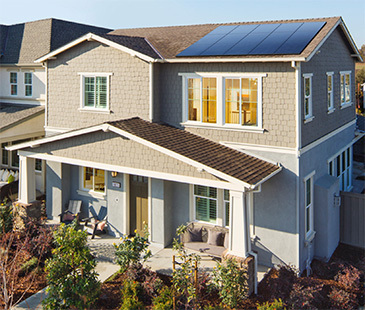
Solar manufacturers are always looking for new ways to make solar cells more efficient, so it's no wonder there are different types of solar panel technologies for customers to choose from, each offering varying levels of efficiency and reliability.
Cells known as "Passivated Emitter and Rear Contact," or PERC, are becoming more common. PERC solar cells have an extra layer on the back side that allows some of the sun's light to be reflected back into the cell. This layer gives the sun's rays a second chance to be absorbed and converted into energy, making PERC solar cells 6 to 12 percent more efficient than conventional solar panels.
While PERC solar panels are a step above other types of conventional panels, IBC, or "Interdigitated Back Contact", panels go even further, with even better efficiency, energy yield and reliability.
SunPower Equinox® complete home energy system offers multiple high quality panel options
With a SunPower Equinox system, you can get PERC or IBC solar cell technology, giving you the choice you need to maximize your solar system’s savings, performance and aesthetics. Even better, we back our panels up with a best-in-industry 25-year Complete Confidence warranty, giving you peace of mind for both the product and the amount of power we promise your panels will produce.
Rigorously quality tested, the panels pair with storage and monitoring hardware so that you can track performance in real time with the mySunPower® app.
And, when installed using SunPower’s InvisiMount® mounting system, you’ll enjoy a streamlined appearance on your roof with fewer visible parts.
Pros and cons of PERC and IBC solar cells
We offer our customers the choice between panels made of PERC or IBC cells, both of which have their pros and cons. Here's a brief rundown on each:
PERC Pros
• Manufactured like conventional solar cells, which means they can be manufactured using existing equipment.
• Higher efficiency versus non-PERC panels means fewer panels are needed to produce the needed amount of electricity.
PERC Cons
• Most PERC solar panels have metal strips running through them, which may not be the aesthetic some homeowner are looking for.
IBC Pros
• Highest-efficiency solar panels available today, lowering installation costs and maximizing the amount of energy produced.*SunPower 400 W, 22.6% efficient, compared to a Conventional Panel on same-sized arrays (280 W multi, 17% efficient, approx. 1.64 m²), 8% more energy per watt (based on PVSim runs for avg US climate), 0.5%/yr slower degradation rate (Jordan, et. al. Robust PV Degradation Methodology and Application. PVSC 2018).
• Greater efficiency means fewer panels needed, leaving room to add panels if you, for example, add an electric vehicle.
• Lower degradation rate than other panels. SunPower® M-Series panels have a degradation rate two to three times lower than conventional panels.*Jordan, et al, "Robust PV Degradation Methodology Application" PVSC 2018 and "Compendium of Photovoltaic Degradation Rates" PiP 2016 This means more power over the life of the system.
• Better performance at higher temperatures and use of more of the light spectrum to create more energy, even early in the morning or late in the evening.
• Cell-level hotspot protection increases performance in shade.
IBC Cons
• These panels may have a higher up-front cost, though over time you'll see a higher return on your investment with a more efficient panel.
Talk to a SunPower dealer about how SunPower's next-generation technology can help you can start generating more energy over time, saving you more money.
Ready to find out how much you can save? Just enter your home address into our solar savings calculator.

